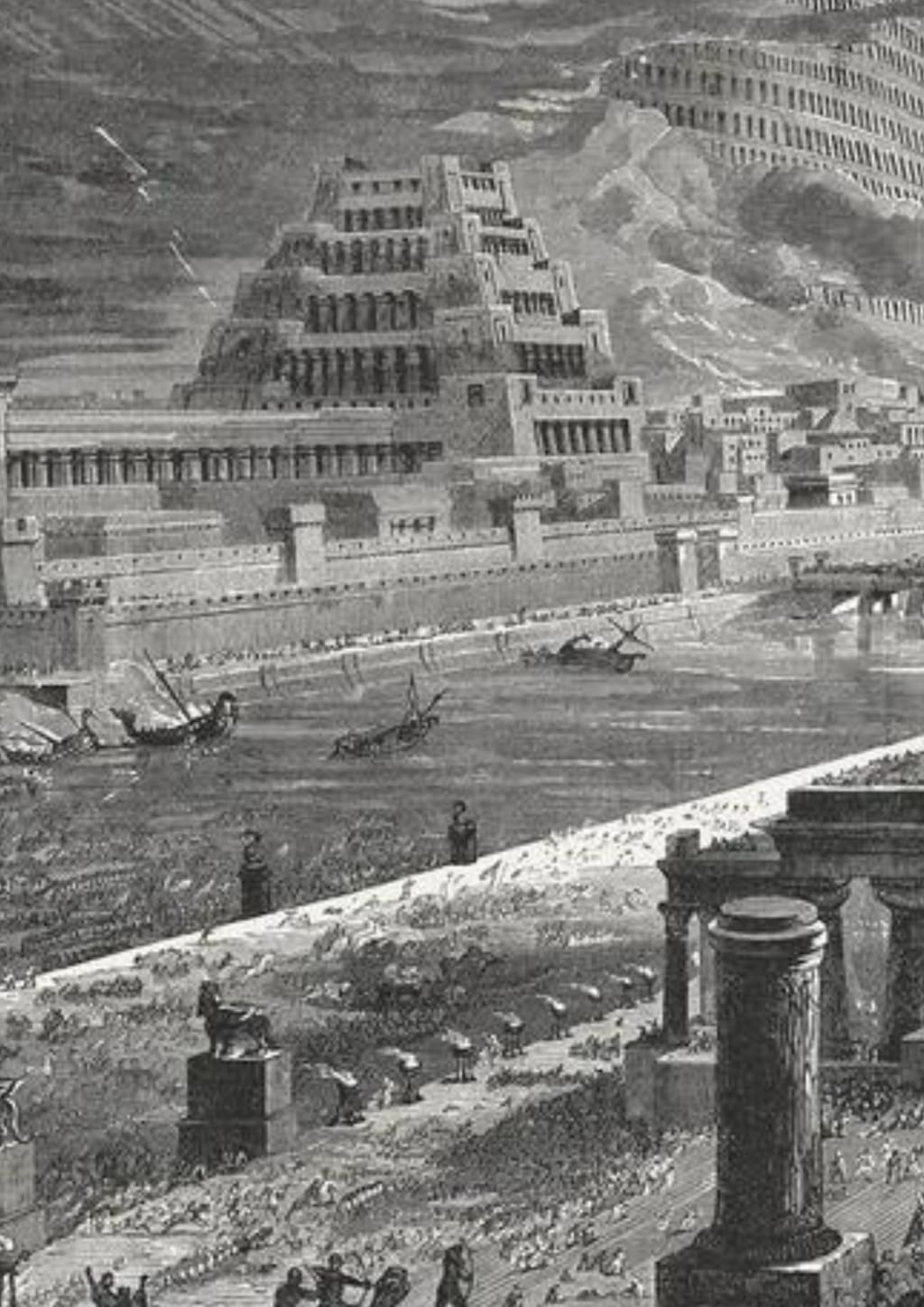Babylon's Heritage: Wins and Misfortunes
Investigating the Ages of an Old Realm

Presentation
The old Babylonian Realm, with its sublime capital city of Babylon, is a spellbinding section in the records of mankind's set of experiences. Its ascent to drive and resulting fall have made a permanent imprint on the course of civilization. Crossing a few centuries, the Babylonian Realm flourished, represented by a progression of momentous rulers, but, similar to all domains, it in the end capitulated to the unyielding powers of time and change. In this article, we investigate the ascent and fall of this celebrated domain, digging further into the purposes for its climb and extreme downfall.
The Ascent of Babylon
Babylon was initially a little city-state in Mesopotamia, arranged between the Tigris and Euphrates streams. Its ascent to noticeable quality started in the eighteenth century BCE subject to the authority of Lord Hammurabi. Hammurabi's standard saw the foundation of a strong line that united the unique city-territories of Mesopotamia under a brought together government. His most critical accomplishment was Hammurabi's Code of Regulations, perhaps of the earliest legitimate code in mankind's set of experiences, assuming a crucial part in bringing together and overseeing this huge district.
Hammurabi's Code comprised of 282 regulations that covered different parts of life, including property, business, and family matters. What made this code striking was its standard of lex talionis, or "tit for tat." It expected to lay out equity and correspondence among individuals subject to his authority. The regulations resolved issues, for example, robbery, property debates, and, surprisingly, set compensation for workers. Thusly, Hammurabi made a feeling of solidness and request in a formerly divided and turbulent locale.
The pinnacle of Babylonian power was arrived at under the rule of Nebuchadnezzar II, who governed from 605 to 562 BCE. Nebuchadnezzar is most popular for developing the Draping Nurseries of Babylon, one of the Seven Marvels of the Antiquated World. His rule denoted the peak of the Babylonian Realm's social and compositional accomplishments. The Hanging Nurseries were a demonstration of his enthusiasm for magnificence and feel. These rich terraced gardens displayed an imaginative water system framework that showed the Babylonians' authority of designing.
Babylon as a Social and Scholarly Center
During its peak, the Babylonian Domain was a military and political force to be reckoned with as well as an energetic focal point of culture and learning. The Babylonians made critical advances in different fields, which would later impact and shape the improvement of human civilization.
One of their striking commitments was in the field of space science. The Babylonians were energetic stargazers, fastidiously recording heavenly occasions like lunar and sunlight based shrouds, planetary developments, and the patterns of the moon and stars. These records, known as cuneiform galactic tablets, are priceless hotspots for current space experts and antiquarians, as they assist us with grasping antiquated information on the universe.
Moreover, the Babylonians made spearheading progressions in math. They utilized a base-60 mathematical framework, which worked with complex computations and exact estimations. This framework impacted later civilizations, including the Greeks, who embraced components of it in their own numerical turn of events.
One more key tradition of the Babylonians was their advancement of the cuneiform composing framework. This framework comprised of wedge-molded characters on earth tablets. Cuneiform was utilized to record an extensive variety of data, from epic verse like the "Epic of Gilgamesh" to lawful codes, managerial records, and strict texts. The protection of these works has given us experiences into their general public, convictions, and day to day existence.
The Fall of Babylon
Regardless of its loftiness and scholarly accomplishments, the Babylonian Realm in the end fell into decline, at last prompting its downfall. A few elements added to its fall:
Persian Triumph: In 539 BCE, the Persian lord Cyrus the Incomparable caught Babylon, denoting the finish of the Babylonian Realm. The Persians accomplished this triumph by redirecting the waters of the Euphrates Waterway, which permitted their soldiers to enter the city through its apparently impervious walls.
Inside Discontent: Likewise with numerous realms, the Babylonian Domain confronted inner difficulty. Debasement and severe rule dissolved the help of the nearby populace, making the domain more defenseless against outside dangers. The residents became baffled with their initiative and yearned for change.
Monetary Downfall: The realm's huge regional degree and asset requests put gigantic burden on the economy. The Babylonians attempted to keep up with the foundation expected to support their domain, prompting monetary insecurity. Besides, steady fighting and the expenses of keeping an immense armed force additionally stressed their assets.
Heritage and Impact
While the Babylonian Realm might have fallen, its inheritance persevered, leaving a permanent engraving on the embroidery of mankind's set of experiences. The Code of Hammurabi, with its standards of equity and equity, turned into a foundation for overall sets of laws that kept. It laid the basis for thoughts of reasonableness and morals that keep on molding present day legitimate codes.
Large numbers of the numerical and galactic ideas created by the Babylonians established the groundwork for later logical accomplishments. From the base-60 mathematical framework to the recording of heavenly occasions, their commitments altogether impacted the improvement of math and stargazing in different societies and times.
The city of Babylon itself turned into an image of quality and power, referred to in various verifiable and strict texts. Its verifiable and social importance perseveres through its portrayal in strict texts, like the Book of scriptures, where it is highlighted in the Book of Daniel, and in the more extensive chronicles of antiquated history.
Conclusion
The ascent and fall of the old Babylonian Realm is a demonstration of the rhythmic movement of human civilization. From humble starting points, it climbed to turn into a predominant power in the old world, abandoning a tradition of social and scholarly accomplishments that keep on impacting present day culture. Notwithstanding, similar to every extraordinary realm, it in the end surrendered to the powers of outside attack, inner turmoil, and financial strain. The narrative of Babylon helps us to remember the fleetingness of force and the persevering through significance of culture and information in the pages of history. It is a strong update that the most fantastic domains can fall, yet their commitments to humankind can persevere through the ages, proceeding to shape our present reality.
About the Creator
Kyrol Mojikal
"Believe in the magic within you, for you are extraordinary."






Comments (1)
this is a significant accomplishment. Your dedication, creativity, and hard work have paid off, and you should be proud of what you've achieved. Keep writing and sharing your unique voice with the world! you can also join my friends and read what i have just prepared for you